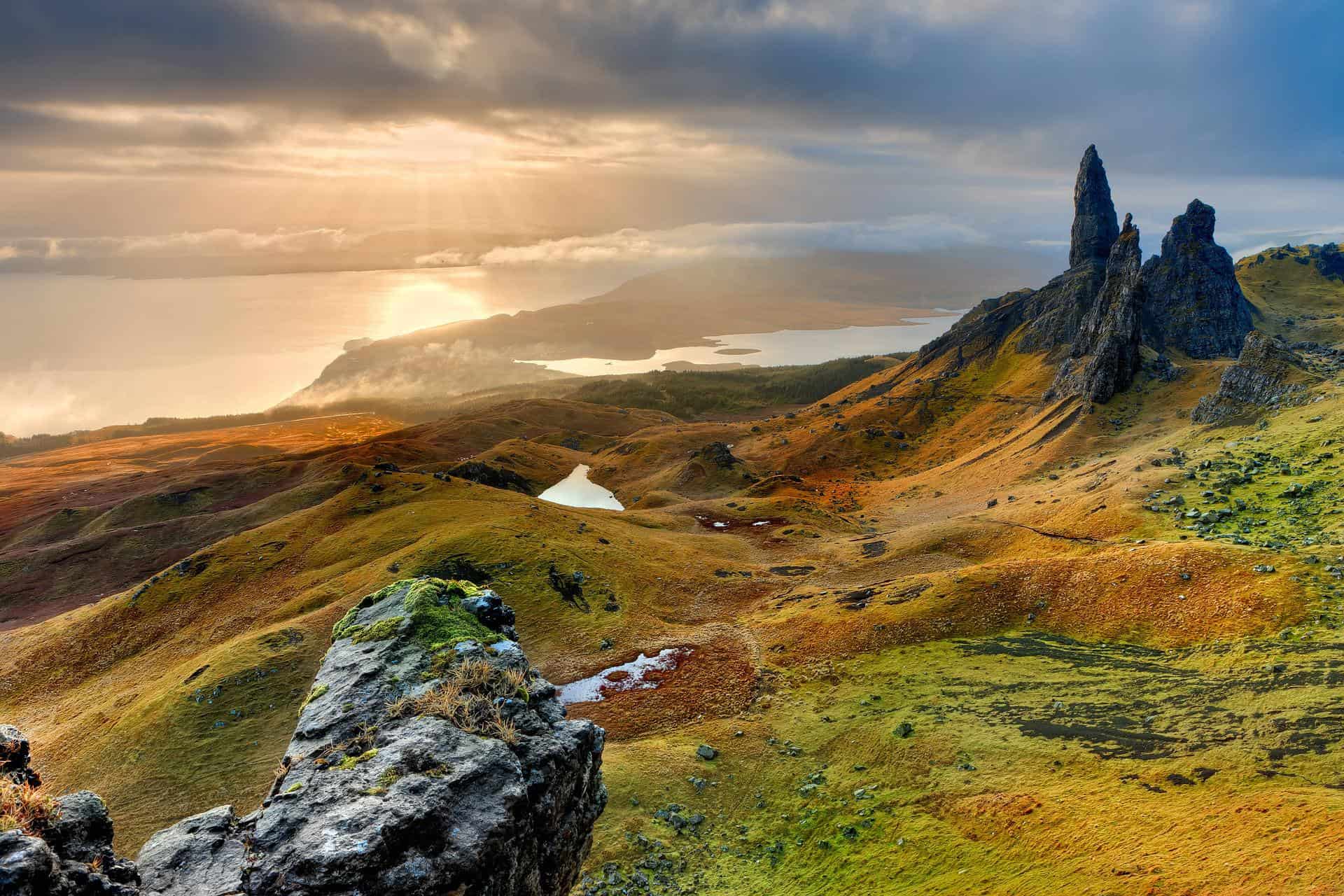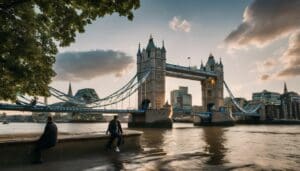Updated On: April 13, 2024 by Salma Ihab
For anyone seeking a fantastic mythological tale, look no further than the history and legends of Ireland. The Emerald Isle is chocked full of fascinating fictitious stories and mystical creatures. The story of Finn McCool is among the most famous of all the legends.
Finn McCool was the invincible warrior of the Irish myths and legends. Throughout history, there have been more than a few stories that tell the exciting story of Finn McCool. Irish mythology is an endless ocean where plenty of entertaining stories exist.
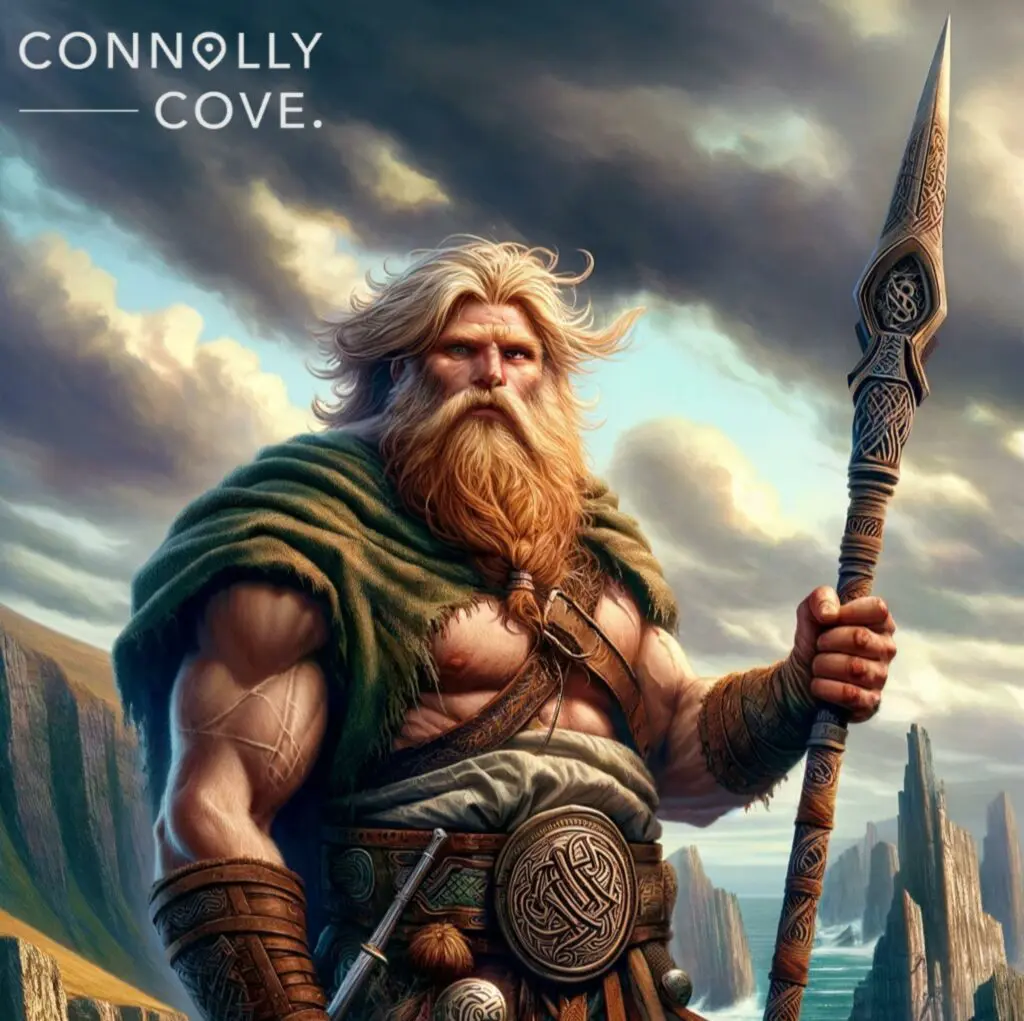
In this article, we’re exploring the legends of Finn McCool, the incredible warrior from Irish mythology. Scroll down to read through the blog, or click on one of the highlighted sections below to skip ahead!
Table of Contents
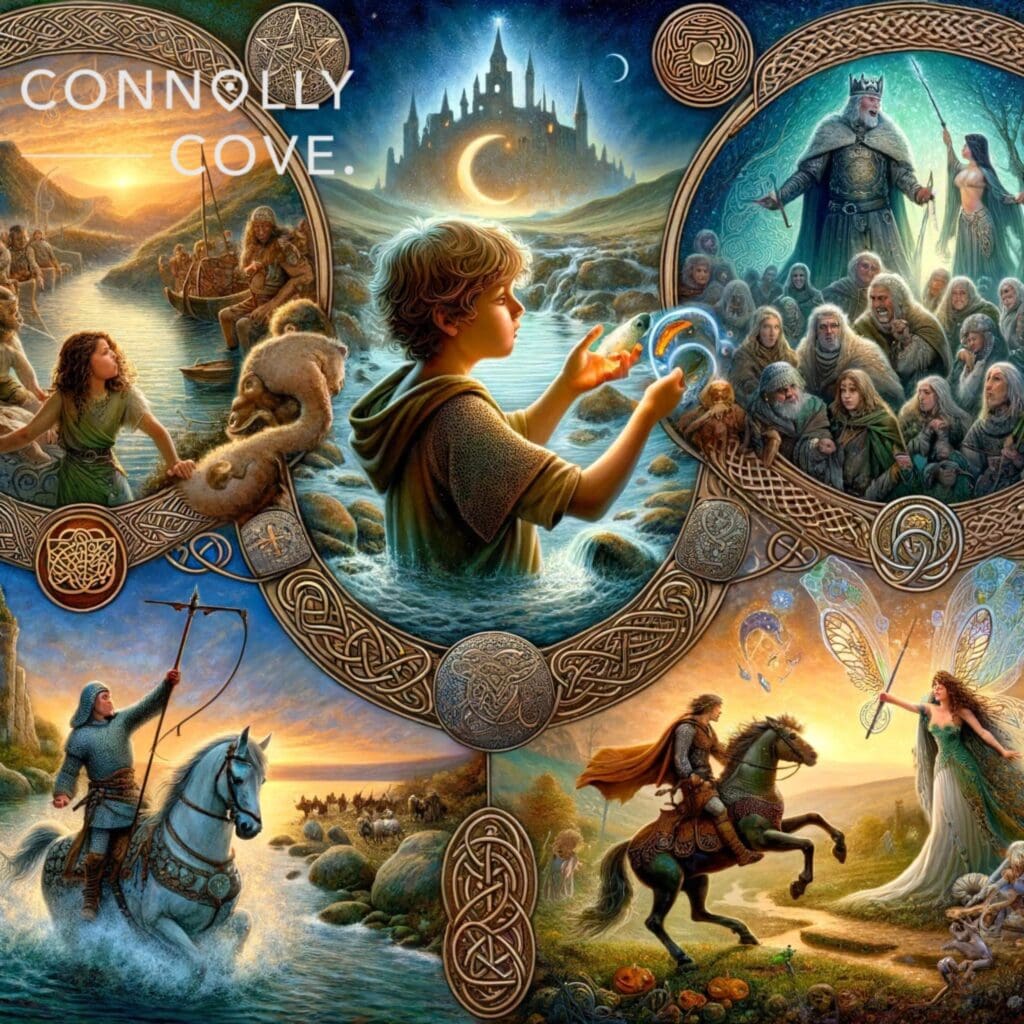
Background on Irish Mythology
“”” Ireland is a country known for its legends and myths. They have spread far beyond the EmeraldIsle’s shores and reached people worldwide. Most of its legendary stories existed way before Christianity entered the lands of Ireland. Thus, there are lots of stories that hold religious references to mythical gods. The Irish mythology consisted of”Celtic Cyc”
More precisely, there were four cycles. Each cycle evoked a particular world that involved a specific category of characters. Additionally, these cycles can help indicate the time from which the legend had emerged. They show the settings, atmosphere, and nature of the worlds and characters they induce.
The cycles divide the fictional history of Ireland into different periods and eras. We will introduce each cycle before classifying what each of them refers to. These cycles are the Mythological Cycle, the Ulster Cycle, the Fenian Cycle, and the Kings’ Cycle.
The Cycles of Irish Mythology
Before digging deeper into the legend of Finn McCool, it is always better to learn more about Irish mythology and how it works. Each cycle features a collection of stories and characters. However, the cycles overlap at times. Sometimes, a story could be from one cycle, but the protagonist involved can belong to another.
The Truth Behind the Cycles
Interestingly, the cycles did not exist during the early times of Ireland. The early Irish people never intended to divide their myths into our current cycles. Instead, it was a technique that modern scholars used to interpret each legend’s history easily.
The division of Irish mythology into the four cycles was used to specify the era from which each Irish myth and legend originated. Understanding the cycles can be confusing, but things will get more apparent once you learn about each of them below.
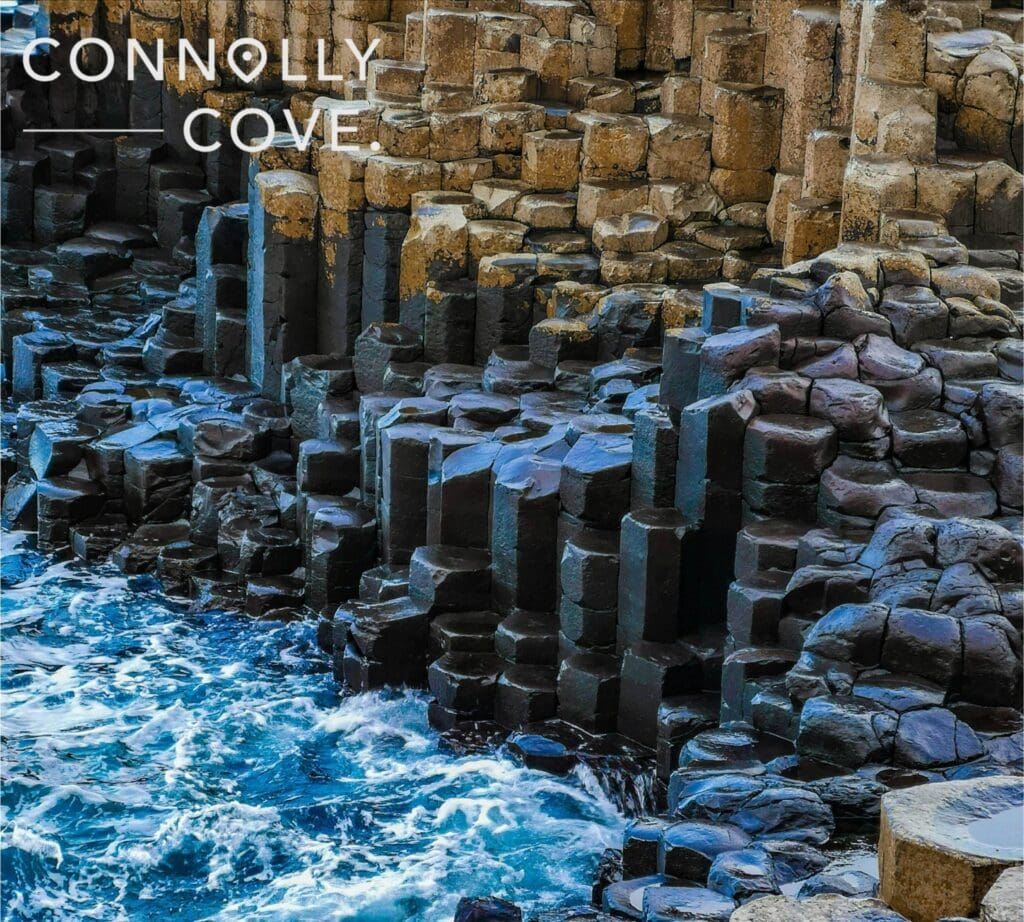
The Mythological Cycle
The Mythological Cycle is when the early Celtic people settled in Ireland. It involves the Tuatha Dé Danann and the Milesians, the dominant mythology race then.
This cycle typically includes stories that have to do with the Celt’s ancient beliefs about gods. It also explains a lot about the origins of the Irish people and the existence of different races during ancient times. This cycle consists of many popular stories, including the tragedy of the Children of Lir and Oidheadh Clainne Lir.
The Ulster Cycle
The Ulster Cycle features the legends of many heroes from Irish mythology. There are tales that date back to the Medieval period and earlier ones that were created when Christianity had just arrived at the borders of Ireland.
There are lots of great stories that belong to the Ulster Cycle. One of the most essential legends was the Cattle Raid of Cooley. The Deirdre of the Sorrows is another famous tale from this cycle. It tells a tragic story about the most beautiful woman in Ireland, with themes of beauty, lust, and death.
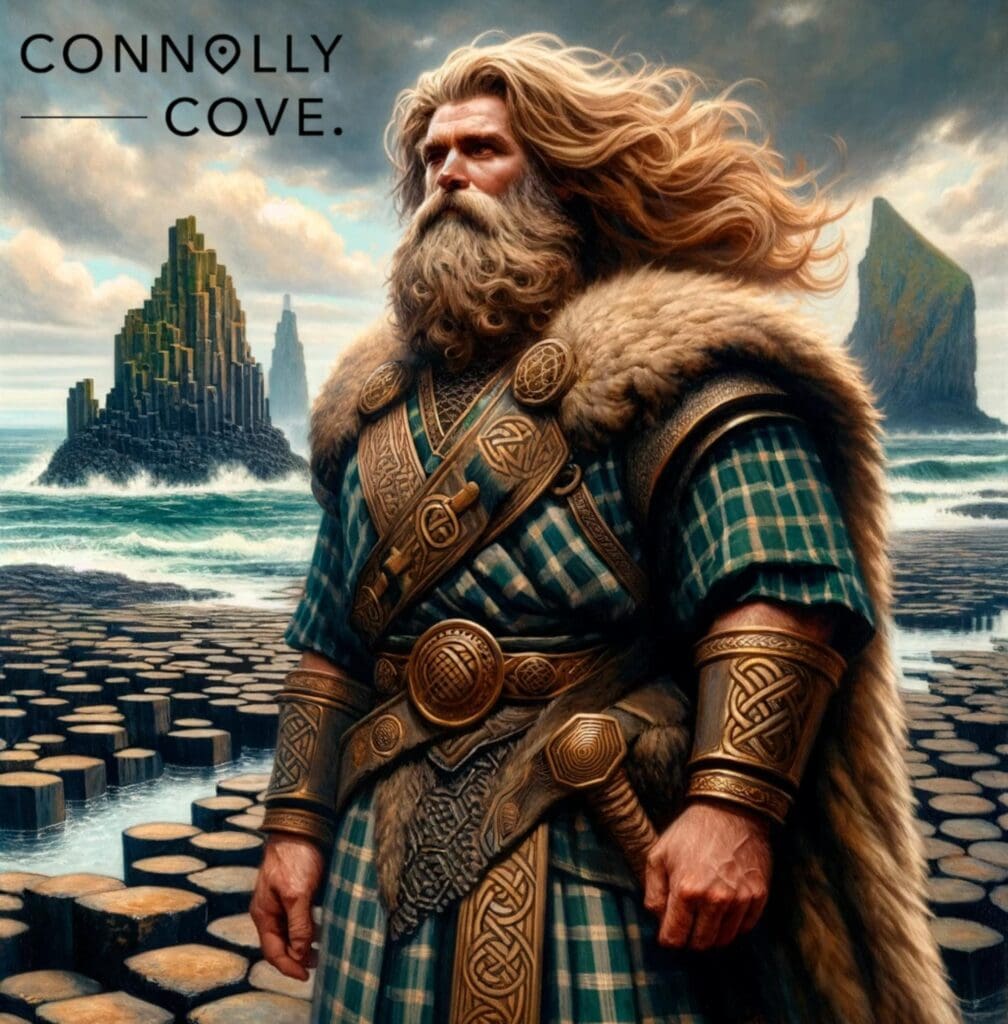
The Fenian Cycle
The Fenian Cycle is often considered the most crucial cycle in Irish mythology. It is called the Fenian Cycle, the Finn Cycle, or the Finnian Tales. The importance of this cycle lies in its inclusion of the mythical Irish hero Finn McCool, after whom it was named.
The cycle also features the legendary warrior Fianna Éireann. She was a warrior who resided in the forests as a bandit or hunter. Interestingly, some call this cycle the Ossianic Cycle, for Finn McCool’s son’s name was Oisín. Supposedly, he was also the one who wrote most of the poems of this era.
The Historical Cycle
People refer to the fourth cycle as the Historical Cycle or the Kings’ Cycle. This cycle covers the period when the Irish poets of the medieval period recorded the history of the king they used to serve through their works.
The poets also often recorded the history of their king’s whole family, including his wives and children. The most prominent stories of this cycle include The Frenzy of Sweeney, Brian Boru, and Labraid Loingsech.
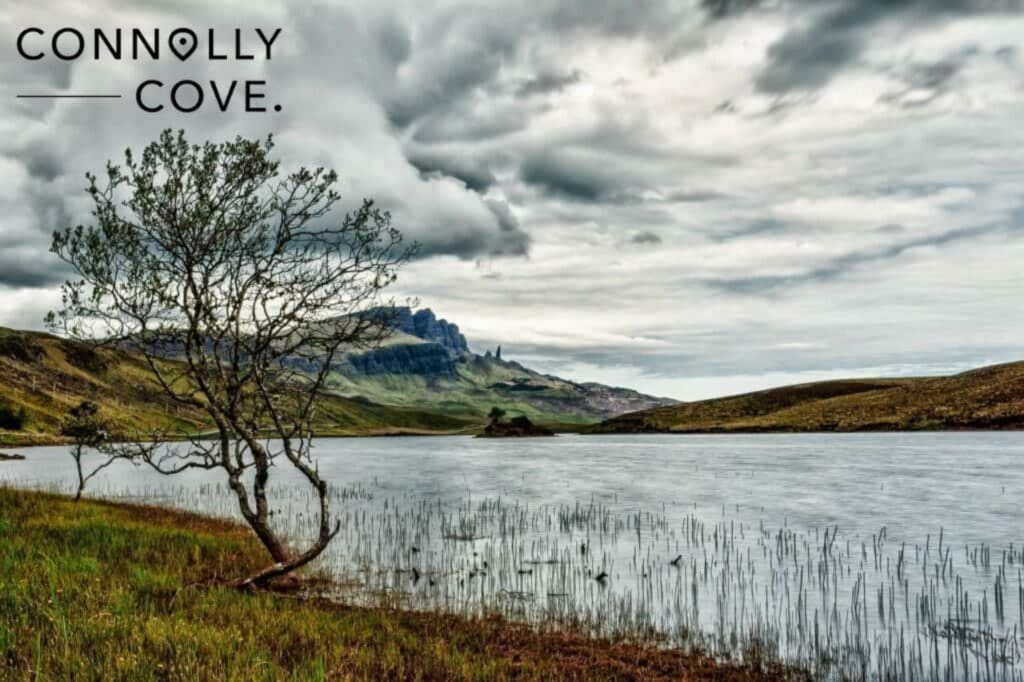
The Etymology of Finn McCool’s Name
The name Finn originates from a mixture of several cultures. The bases for his name across cultures meant variants of the following terms: Blond, Fair, Bright, or White. The character of Finn McCool itself was initially a God, according to the Celtics. However, the Scottish form of his name was Fingal.
According to the old Irish, Finn McCool’s original name was Fionn Mac Cumhall. In the earlier periods of Ireland, people had become familiar with pronouncing Cumhall as Coo-al or Cool. For that reason, Finn’s name became commonly used as Finn McCool instead.
The name appeared after the poet James Macpherson told the legend in an epic form. Even a cult existed among the European countries that is documented as most probably believing in Finn McCool as their god.
The Legend of Finn McCool and the Giant’s Causeway
Finn McCool was a legendary warrior from Irish mythology. Interestingly, he was also a warrior in other mythologies, including Scotland and the Isle of Man. Finn McCool was the character who became popular during the Middle Irish period. Before this, he was known as either Finn or Find.
According to the Irish legends, Finn McCool was a giant warrior. His height reached almost 54 feet tall, making him an enormous creature. Generation after generation had been telling his story of the Giant’s Causeway.
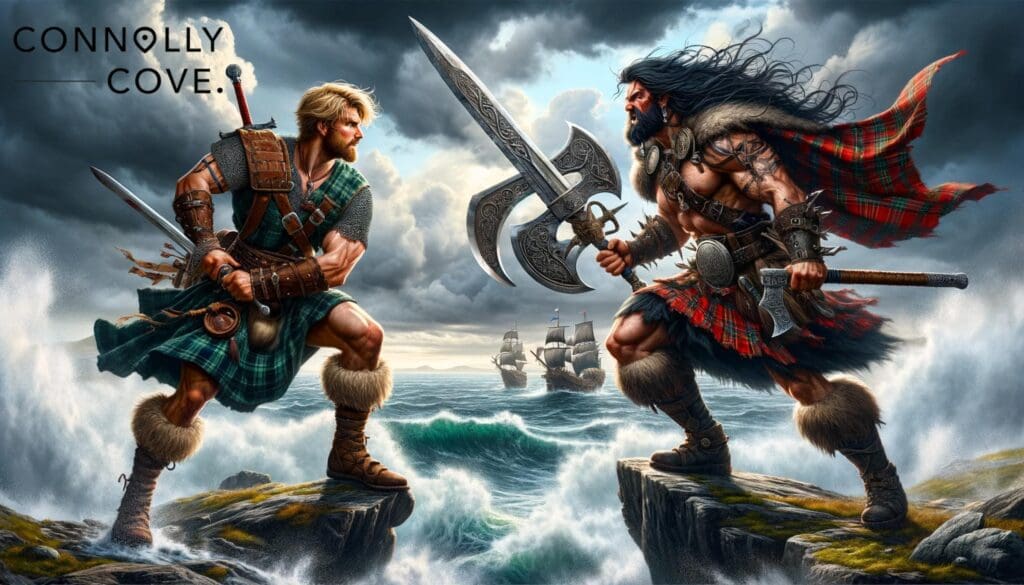
Finn McCool was the builder of the Giant’s Causeway and the leader of the Fianna, a group of warriors. The story of the Causeway takes place on the Antrim Coast in Northern Ireland.
On the coast was the place where Finn lived happily with his wife, Oonagh. However, his happiness slowly faded as soon as he learned about Benandonner, his Scottish rival. Benandonner would consistently tease and insult Finn McCool.
After dealing with Benandonner’s constant insults, Finn finally had enough and decided to take action. In retaliation, Finn took out a scoop of mud and chucked it across the other side of the sea at Benandonner. He missed his target, however, which caused Finn to grow even angrier.
Building the Giant’s Causeway
Pent up with anger, Finn McCool decided to challenge Benandonner. He wanted to end their feud with a proper fight, declaring one the winner and the other the loser. The idea of building the causeway came to Finn McCool so he could get to Benandonner without getting wet.
Finally, the causeway was ready for Finn McCool to cross. But then, upon reaching the other side of the sea, Finn realised how huge Benandonner was. His Scottish rival was much more prominent in size, causing Finn to get a shiver down his spine and flee away back to his home.
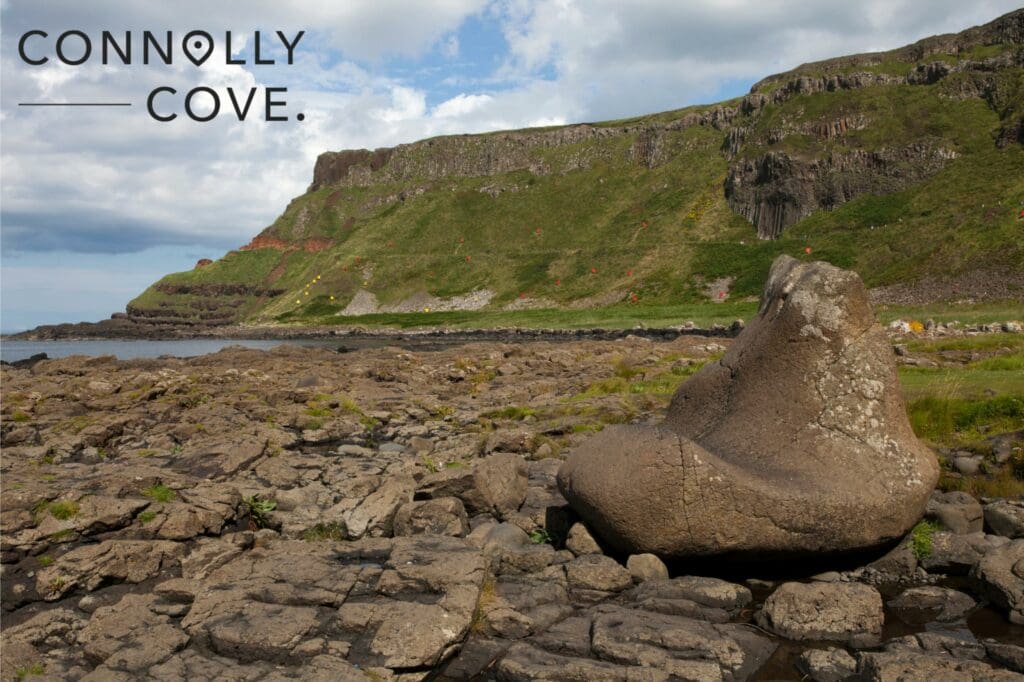
While fleeing back to Antrim’s shores, Finn lost one of his enormous boots. Some people claim that the boot still exists, sitting in the same place where it fell off. The boot is believed to have fallen off at Port Noffer, where a sizeable boot-shaped stone can be found.
Finn McCool’s Ridiculous Disguise
While running back to his hometown, Finn thought about the perfect way to defeat Benandonner. He came up with the idea of hiding, but he was not sure where he should hide or how to avoid getting caught. Subsequently, Finn asked his wife for help. He asked her to hide him somewhere secretive.
His wife, Oonagh, devised disguising Finn instead of hiding him. Brilliantly, Oonagh helped disguise Finn as a baby. She put him in a vast cradle and kept pushing him back and forth. She thought this would lead Benandonner to mistake Finn for a child and keep looking for him elsewhere.
However, the story took a funny twist. One day, Benandonner caught sight of the size of the enormous cradle. The size of the sleeping baby took him by surprise. Benandonner thought that a baby of such a vast size must have an incredibly colossal father nearby.
Benandonner was extremely terrified of the idea of such a large man and decided to flee back to his home in Scotland. He also feared that Finn might follow him during his retreat, so he destroyed the causeway on his way.
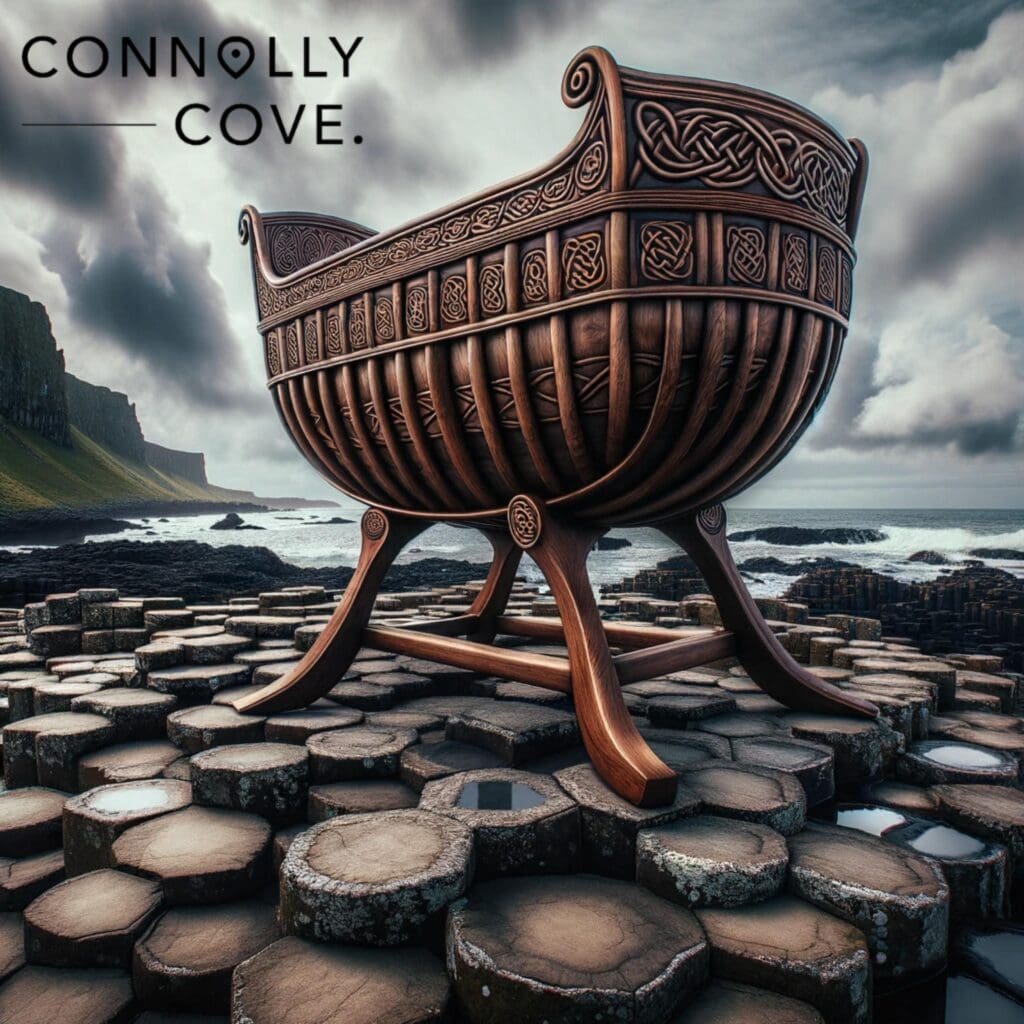
The Legend of the Lough Neagh
Going back to the beginning of the legend behind the creation of the Giant’s Causeway, we mentioned that Finn McCool took a scoop of mud and threw it towards Scotland in a fit of rage. However, the mud missed Benandonner and landed in the middle of the water.
The legend states that the scoop of mud was so large and Finn’s throw so powerful that when it landed in the sea, it formed Lough Neagh.
Lough Neagh is a reasonably large freshwater lake in Northern Ireland, around 30 kilometres from Belfast. The name derives from an old Irish name, Loch Neachach. The literal meaning of this word is the Lake of Eachaidh. Earl of Shaftesbury is the owner of the lake.
Some claim it is the largest lake in the Isles, the most significant in Britain. It is one of the largest lakes in all of Europe. Lough Neagh is one of the primary water sources in Northern Ireland; it supplies about 40% of the country’s water.
Lough Neagh in the Irish Folklore
Lough Neagh has appeared in more than a few tales in Irish mythology. Being one of the twelve chief lakes in Ireland, it is easy to understand why Lough Neagh is highlighted in many folklore legends.
Although the Giant’s Causeway legend tells of Finn McCool creating Lough Neagh by throwing a scoop of mud, some tales provide alternate reasons for how it came to be.
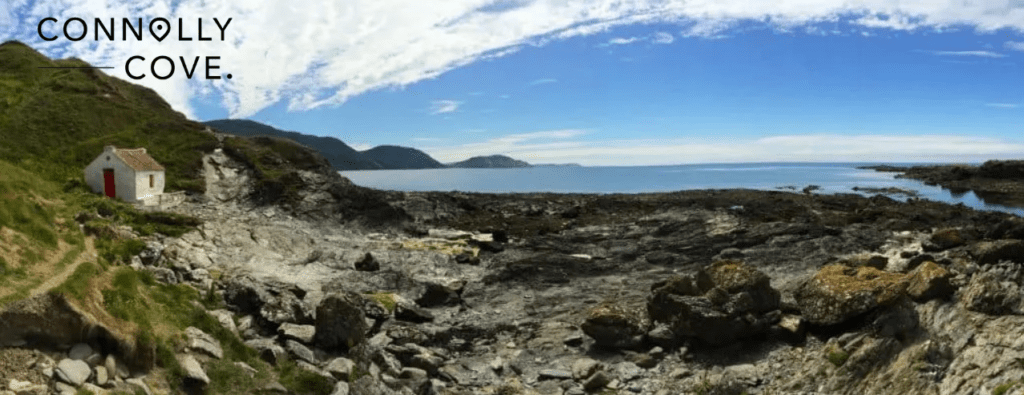
The Battle of Moytura
According to the mythical tale of the Battle of Moytura, the lake was named in honour of the king of Munster, Echaid. He fell head over heels for the young woman, Ebliu, his stepmother. The two of them attempted to elope together, but they faced many obstacles.
One of their most enormous hurdles was that their horses were slain, and they had no other methods of travel. Some versions of the tale even indicate that Ebliu’s husband was probably the murderer of the horses.
Their attempts to elope all fail until they encounter Oengus, who helps them by providing a gigantic horse. His help seemed like a blessing to Echaid and Ebliu. However, he warned them that a curse would strike them for good if the horse rested.
On their journey, the horse stopped at a spot in Ulster where a spring had started forming. Not wanting to trigger the curse, Echaid decided that this location was a good place for him to build a house. He wasn’t to prevent the spring from flowing over the land, so he placed a capstone over it.
Unfortunately, Echaid’s plan was not as brilliant as it seemed. One night, the spring managed to move the capstone and began flowing freely. The sudden rush of water caused the house to become submerged and everyone inside, including Echaid, to drown.
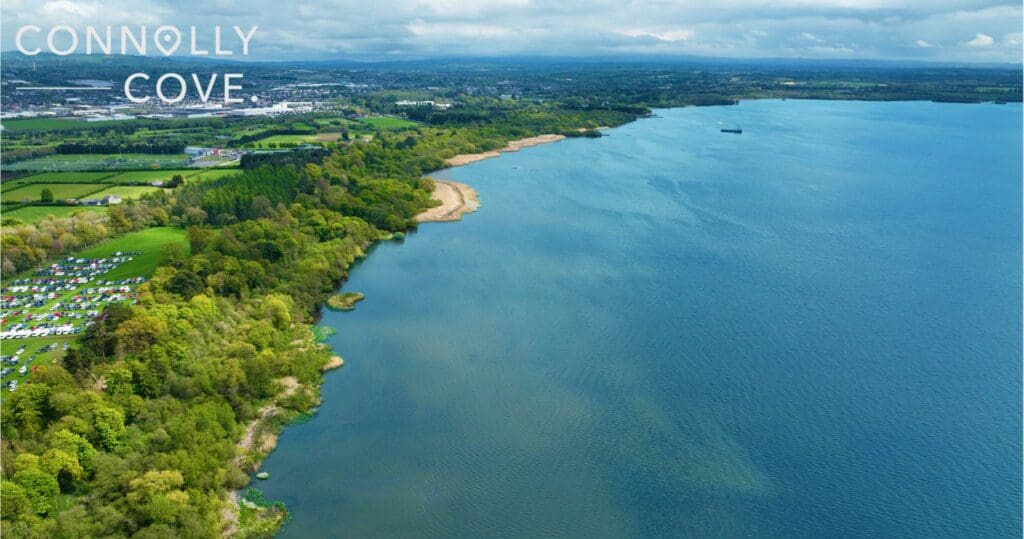
As a consequence of the horse resting, the overflowing spring that Echaid tried to cut off ended up creating Lough Neagh. According to Irish mythology, the character of Echaid referred to one of the gods of ancient Ireland, Daghda. People referred to him also as Eoch.
The Daghda
The ancient god Dagda, or Daghda, spearheaded old Ireland’s divine deities. According to the Irish myth, Dagda was the foundation of all the other gods and the male humans. This was because he presented Ireland’s idyllic traits and features.
Most of the ancient Celtic gods lacked the specification of specific origins. Although Dagda was one of the only gods with a proper backstory, most ancient Irish people mocked the Daghda. Luckily, some tales say that he could tolerate the jokes cracked about him constantly.
Regardless of the mockery, according to Irish mythology, the Daghda was still a figure of power and authority. He was the father of all the deities and men of Ireland. Most of the ancient Irish tales and legends presented him as powerful and prevailing.
A new legend about the Daghda was formed during the English Civil War era. The story tells of a gigantic creature called the Cerne Abbas Giant. Some sources argue that the giant man represents the divine figure, the Daghda.
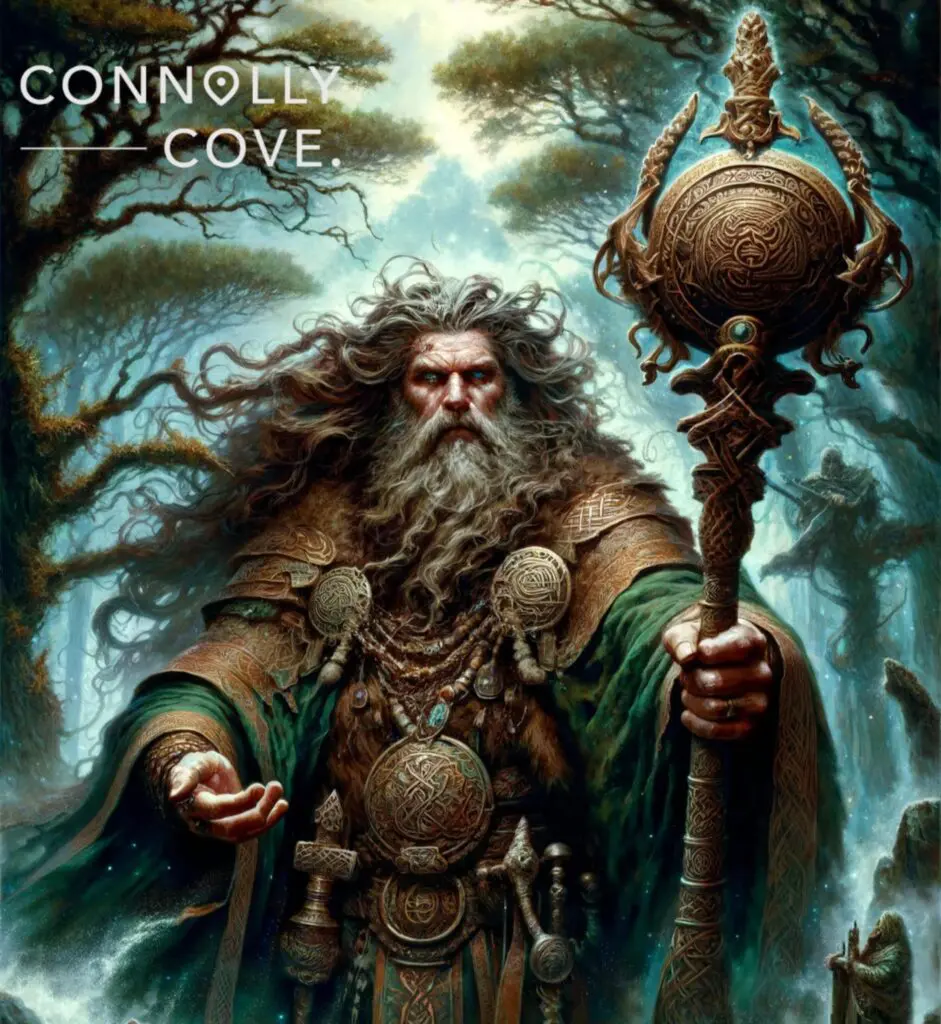
Interestingly, some sources declared that they had a whole different thought process. These sources claim that the giant figure most likely presents Hercules or Heracles in other cultures. The reason for the diverse beliefs was that the depiction of the Cerne Abbas Giant included a huge material hanging off the figure’s arm: the skin of a murdered lion.
The Finn McCool Family
Finn McCool’s Father, Cumhall
The story of Cumhall started as a fairytale but, unfortunately, ended with war. Cumhall was in love with Muirne, the daughter of the druid Tadg mac Nuadat. He decided to propose and ask for her hand in marriage. However, he could not get her father’s approval. Consequently, Cumhall and Muirne planned to run away and elope.
His Death
Something about Tadg piqued the interest of the High King, Conn of the Hundred Battles. As a result, he decided to cooperate with Tadg and start a war against Cumhall. Interestingly, the Middle Irish Tale tells that Cumhall did not die during his wife’s father’s battle against him.
Instead, Cumhall died in the Battle of Cnucha. Goll mac Morna was the one who started this battle, for he wanted to take over the leadership of the Fianna, the land that Cumhall ruled. Even after the death of Cumhall, Goll mac Morna did not get to take the throne.
Muirne was already pregnant with their son, Finn McCool, who would be the heir. Upon the death of Cumhall, Muirne gave birth to Finn McCool. He became the leader of the Fianna and earned his uncle, Crimmal, as an ally.
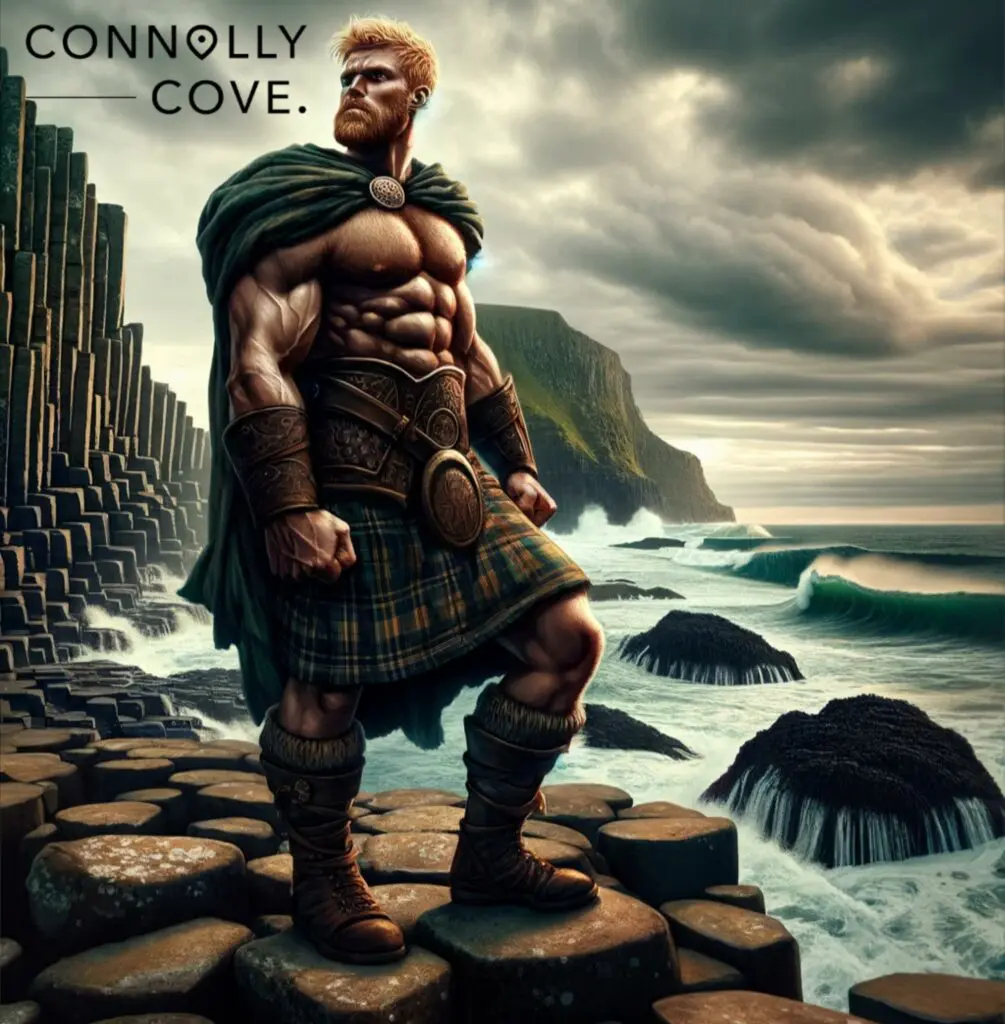
Some sources claim that Cumhall’s body exists under the grounds of a secondary school for boys in Dublin. More specifically, they claim that his body was buried under a hill where a water tower now resides.
Different Names for Cumhall
Many sources and texts referred to Cumhall as either McCool or McCool. Some sources, although rare, referred to the warrior Finn McCool as Fionn mac Umaill instead. These references indicated that Finn McCool’s father’s original name was Umall rather than Cumhall or McCool.
Finn McCool’s Son, Oisin
‘””Finn McCool was the father of Oisin; his name is pronounced “‘ Oh-sh””. According to Irish mythology, Oisin was the greatest poet that Ireland had ever witnessed. Like his father, he belonged to the Fenian Cycle and was an invincible warrior.
Sometimes, people refer to Oisin by the name Osian or Ossian. Because of this, some historians have even referred to the Fenian Cycle as the Ossianic Cycle. Most of the poems from the cycle belonged to Oisin, so the cycle was named after him.
“‘Oisin was born to Finn McCool and Sadhbh, the daughter of Bodb Dearg and the narrator of most of the tales from the Fenian Cycle. The literal meaning of the name Oisin is young”‘. Some tales claim that his name was because his mother, Sadhbh, transformed into a deer because of a druid, Fear Doirch’
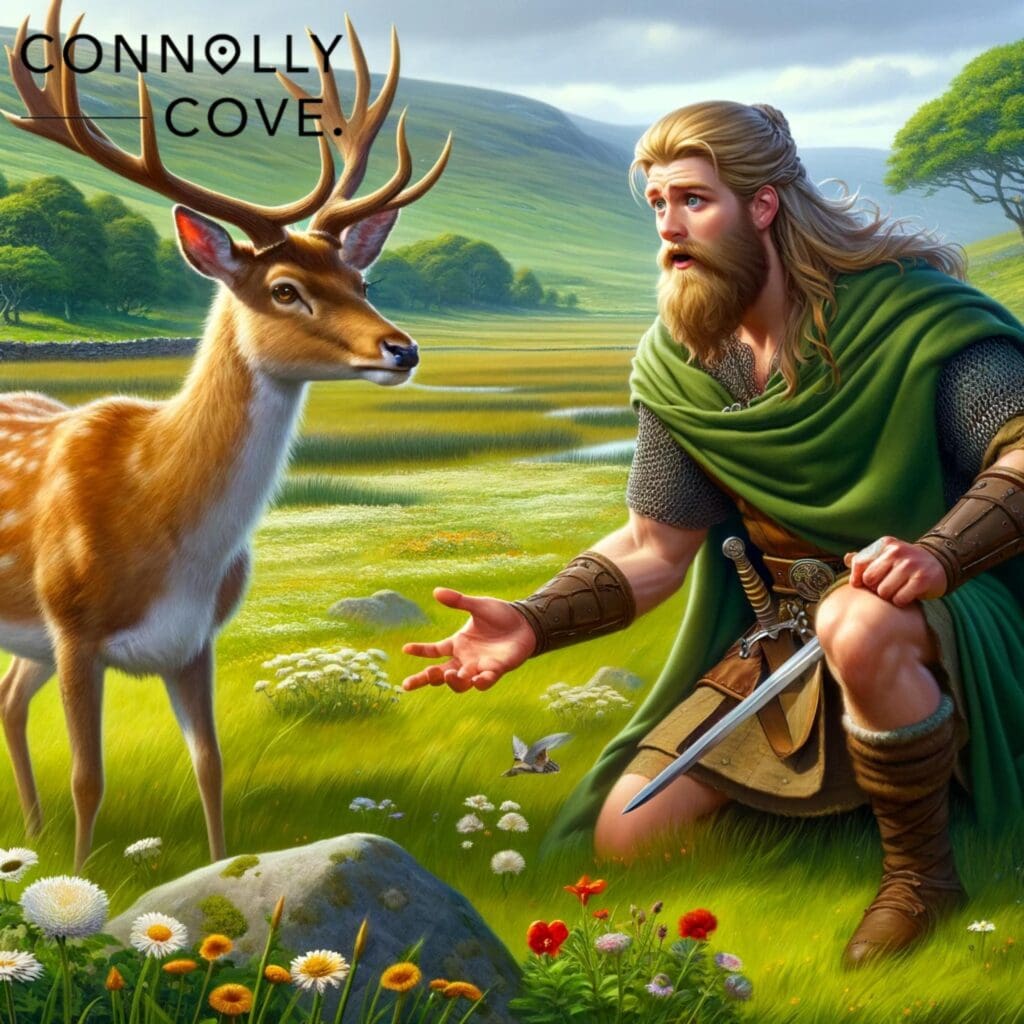
That claim takes us back to when Finn McCool and Sadbh first met. Their love story begins when Finn is hunting one day, and he captures Sadbh as a deer. She returned to her original form as a human, and Finn quit hunting for good.
He wanted to settle down with her, and after a short while, Sadhbh became pregnant. However, before giving birth, Fear Doirche turned her into a deer again.
The First Meeting between Father and Son
Finn McCool never saw Oisin when he was first born because Fear Doirche had sent his wife to the wild as a deer. There were two main versions of how Finn first met his son. One version states that Finn found his son naked on Benbulbin when he was only seven years old.
The other version claims that they met when Oisin was already an adult. The tale narrates that Finn McCool and his son were furiously competing against each other over a roasting pig, but as soon as they recognised one another, the pair quit fighting.
Tales About Finn McCool’s Son, Oisin
Oisin was not only the son of one of Irish mythology’s most prominent characters, Finn McCool. He was also known for having his legends and famous adventures. Oisin’s most famous story was Tir na nOg.
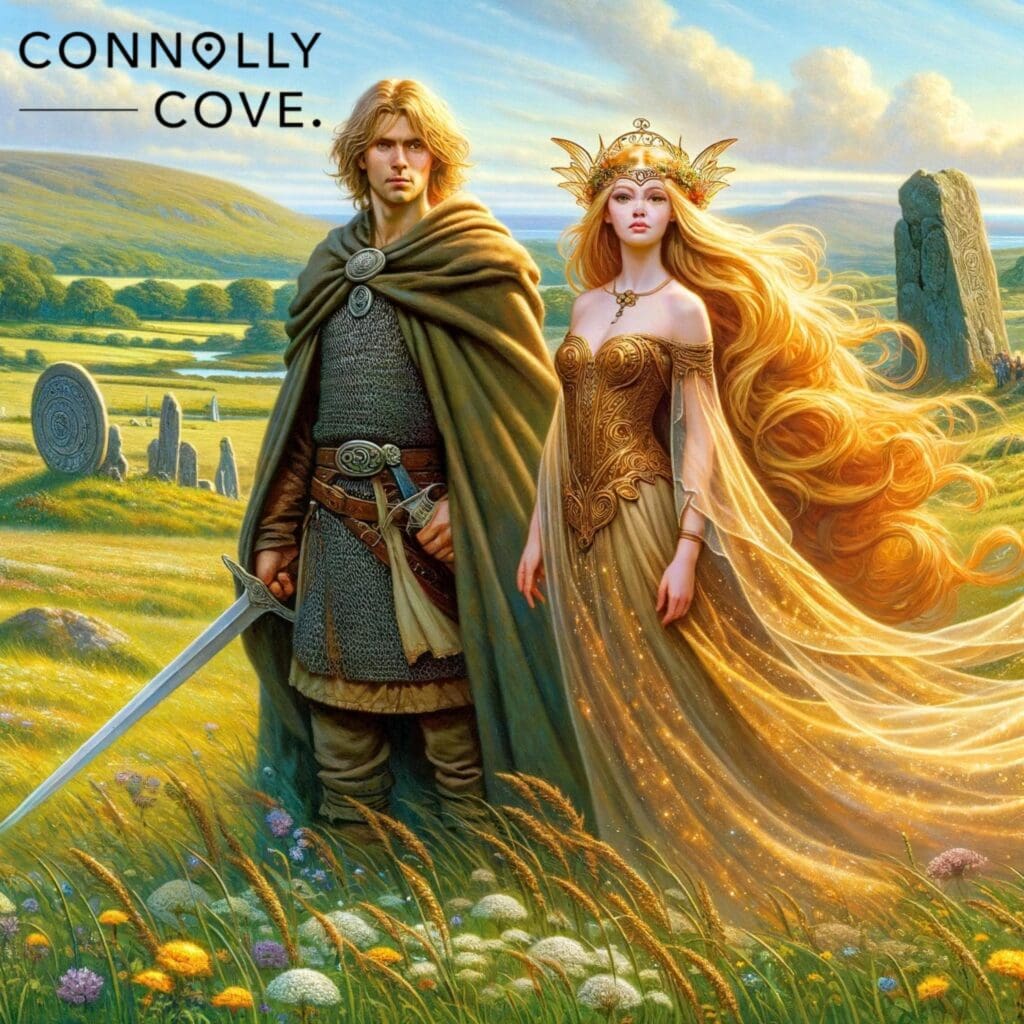
In this tale, Oisin receives a visit from Niamh Chinn Oir, a fairy woman with golden hair. She was one of the many daughters of the god of the sea, Manannan mac Lir. Once she appeared to Oisin, she expressed her love for him.
“”‘Immediately, they leave for Tir na nOg, which translates to the Land of the “”. There, they had two children: a boy, Oscar, and a girl, Plor na mBan.PlornamBan’sssss name means the Flower of women
After some time, Oisin decided to return to his hometown in Ireland. He thought he had been in the Land of the Young for three years but was away for three hundred years. He was not aware that centuries had passed already.
Niamh gave Oisin Embarr her white horse. She guided Oisin that he should not get down off the horse. She warned that if he did so, as soon as his feet came in contact with the ground, he would turn into a 300-year-old wanted man.
Although Oisin now understood how many years had passed since he had last been home, he was shocked when he reached his hometown to realise that his father’s house was abandoned and in ruins.
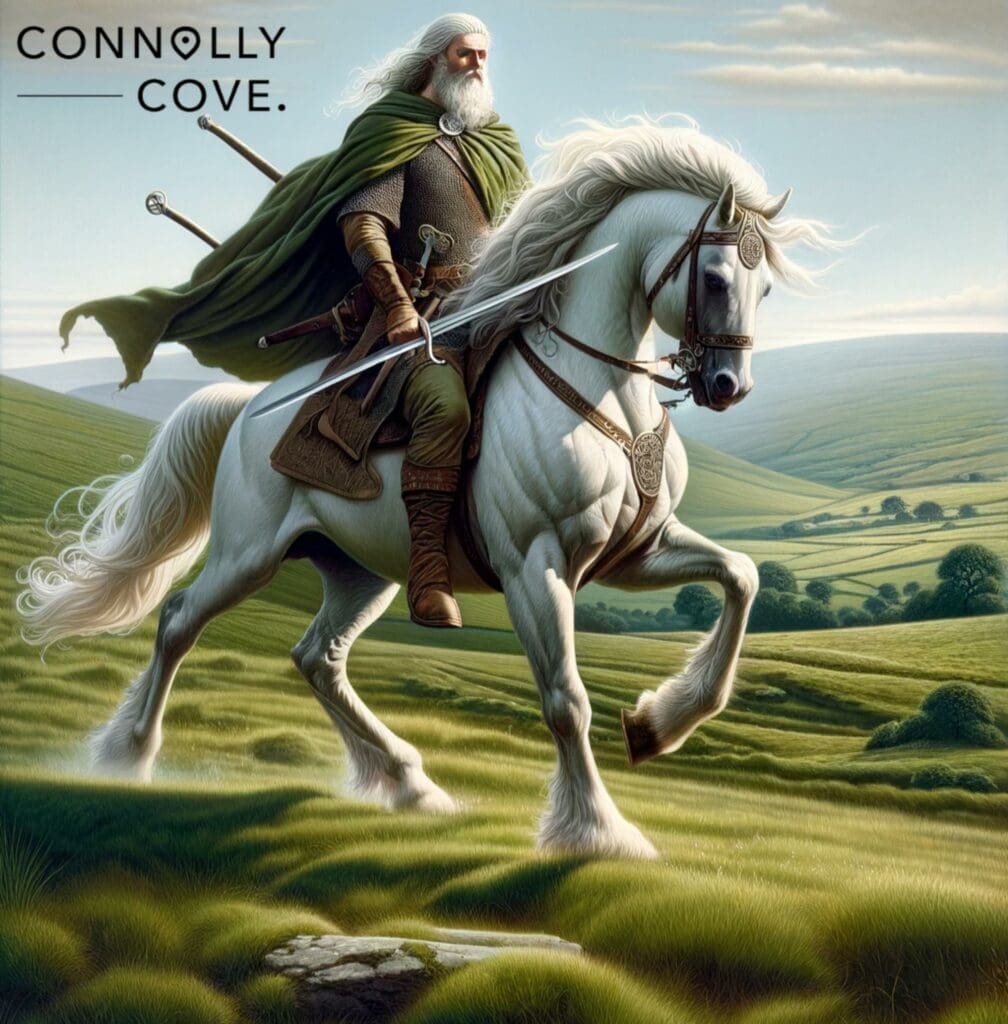
The Ending of Oisin’s Famous Echtra
Like most of the tales in Irish mythology, the story of Tir na nOg has more than one possible ending. In the legend, Oisin was assisting some men in building a road in Gleann na Smol. He was helping them while staying mounted on the horse so as not to age rapidly.
However, he accidentally fell off the horse’s back and touched the ground while picking up one stone. Consequently, as his wife warned him, he rapidly became a weak older man. The horse then flew back to The Land of the Young.
In an alternative version of the legend, the ending featured a different perspective regarding Oisin’s demise. The other ending claims that Saint Patrick visited Oisin right before his death. Oisin told St. Patrick the story of his life and all he had been through before he passed away.
The Burial Site of Oisin
There is no agreement over the exact burial site of Oisin. Some sources claim the burial site is in Glenalmond, Perth, Scotland. On the other hand, some people claim that the grave can be found in the Nine Glens of Antrim. In that area, there is a specific site that people refer to as Oisin’s Grave.
Where do you think Oisin was buried?

The Ancient Tales of Finn McCool are Intriguing to Explore
Irish mythology is bursting with secrets and interesting facts about the past. Finn McCool is one of the most prominent figures of ancient Irish mythology. He was known as a giant, invincible warrior who built the Giant’s Causeway and created Lough Neagh.
The legends and tales from Irish mythology reveal a lot about the beliefs of the ancient Celts, the culture, and some of Ireland’s most significant landmarks. What are your favourite stories from ancient Ireland? Tell us in the comments below!
If you have enjoyed this article, check out our blogs about other Irish legends, like the Children of Lir and the Leprechauns.


